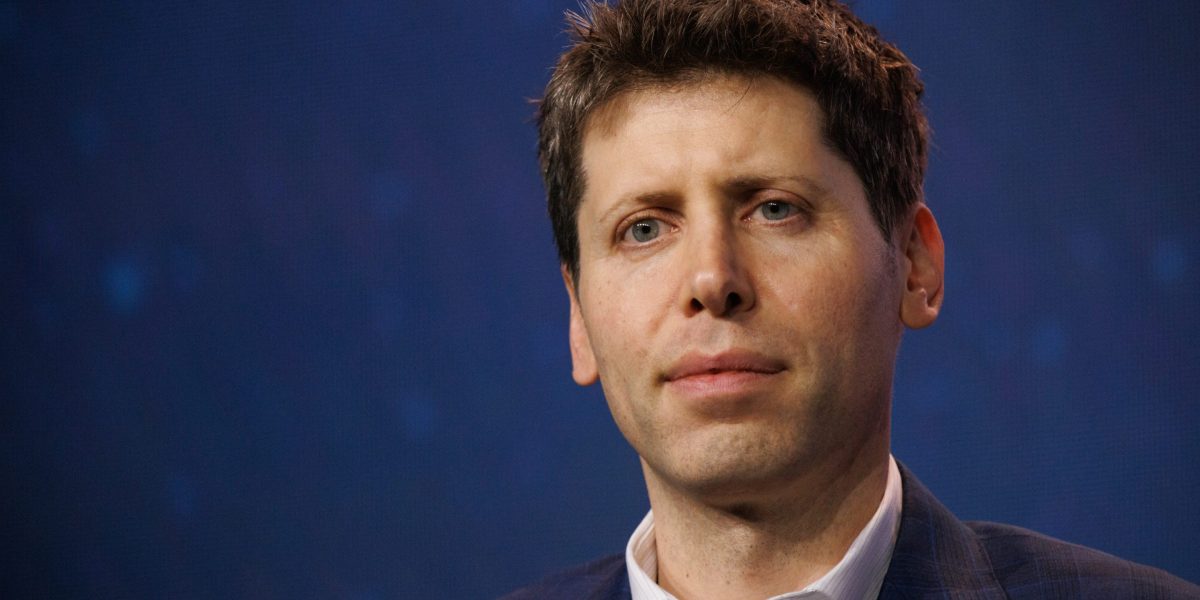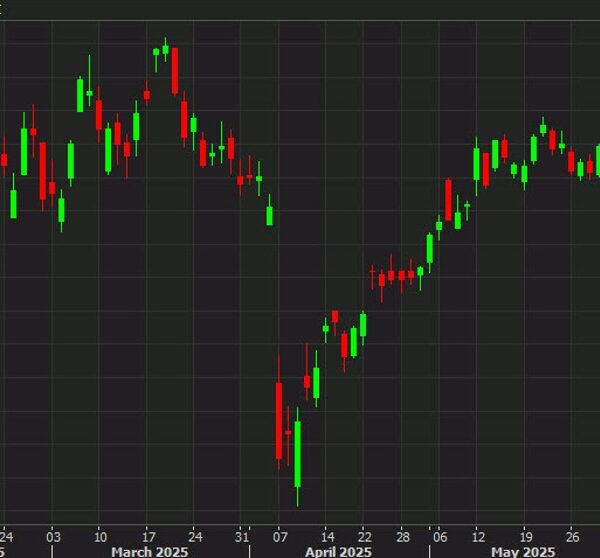A key policy goal of President Donald Trump’s administration is bringing jobs back to American factories, though the effort has been mired in a years-long slog despite support from both Democratic and Republican administrations.
But even beyond the challenge of getting large, multinational companies to reroute their complex supply chains, there’s a large and unsolved skills gap problem to address even if these U.S. manufacturing jobs were to proliferate. Peter Koerte, the chief technology officer and chief strategy officer at German technology conglomerate Siemens AG, points to research that shows that the average tenure of a U.S. manufacturing worker has slipped from 20 years in 2019 to just 3 years in 2023.
“Which means that most of the people that you find—and in particular if we want to bring back manufacturing to the United States—they’re unskilled,” says Koerte. “Because nobody wants to have a factory job.”
Official government figures are less dire, with the Bureau of Labor Statistics reporting that the median tenure of a manufacturing worker dropped from 5.9 years in 2014 to 4.9 years a decade later. But regardless, manufacturing workers are coming to work each day with a lot less expertise than those who worked similar jobs decades ago.
This led Siemens to launch a pilot program in 2024 for an industrial-focused AI copilot, helping engineering teams to search Siemens manuals in natural language to troubleshoot problems on the factory floor. This year, the company expanded the effort by launching an industrial foundational model that was specifically designed for industrial applications.
As an example, this AI tool can be used by a worker who is trying to figure out what to do when a machine breaks down. The employee can input information about the machine and the error code that’s on display, and then retrieve detailed instructions on how to address the issue. Less downtime for machines saves factories time and money. The use of AI in this manner also democratizes engineering expertise.
“You don’t need to have the very deep domain know-how that prevents you from using those systems,” says Koerte. “It levels the playing field.”
Koerte has had a long career at Siemens, joining the company in 2007 as a corporate strategist and taking on several leadership roles before ascending to the CTO and CSO titles in 2020. He says he’s remained at Siemens for such a large portion of his career because he’s inspired by the company’s ability to continually reinvent itself over its 178-year history.
Siemens began as a telecommunications company that built the infrastructure that made it possible to send a telegram from London to Calcutta in just 28 minutes, a momentous breakthrough in the mid-1800s. Today, Siemens is known for selling machinery and software that support massive industries including the power and gas sectors, healthcare, and building and freight projects, ranging from supporting a 2,000-kilometer high-speed railway that’s being built in Egypt to an automotive Mercedes-Benz plant in Berlin. The advancement of generative AI presents yet another opportunity for reinvention, says Koerte.
Koerte says Siemens was an early adopter of more traditional forms of AI that have been used for many years in manufacturing, including to perform quality inspections or to ensure that buildings are using energy as efficiently as possible. Before the generative AI boom kicked off in late 2022, Siemens had more than 1,500 AI experts on staff.
Along that journey, Siemens has embraced a wide variety of AI partners, including heavy hitters like Nvidia and Amazon Web Services, as well as European-based AI companies and large language model makers in China. Microsoft has been an especially critical partner, Koerte says, offering engineering expertise and insights into how to commercialize the company’s industrial AI offerings.
Software development ranks as a high priority use case for generative AI. The company’s software developer workforce of about 27,000 employees have been using AI coding assistants like GitHub Copilot and the productivity lift from those tools ranges between 10% to 30%, says Koerte.
Across the broader workforce, there are 460 distinct AI use cases in production today, a figure that excludes the unique AI chatbots that workers can create to perform tasks through a secure system that’s called SiemensGPT. In total, over 15,000 unique bots have been created by Siemens employees since October 2024.
“We have it pretty much everywhere,” says Koerte of AI’s pervasiveness. “The question is, how much have we saved?”
That’s not yet completely resolved and most surveys of CTOs and chief information officers show that the return on investment for generative AI projects isn’t as clear as they’d like it to be. But Siemens has set a north star goal. Before the influence of generative AI, the company had an annual productivity gain target of 3% to 4% across the business. But Koerte says with AI, the hope is to double that aspirational range.
He believes that parts of the economy that have big skills gaps will reap the most benefits of AI. When Siemens launched an AI-enabled assistant tool to help radiologists detect diseases, the greatest adoption came from underdeveloped countries where there were far fewer specialists.
“You always have to look at necessity, where the biggest challenge and necessity is,” says Koerte. “Because then people have to look at it differently. And they have to change.”
John Kell
Send thoughts or suggestions to CIO Intelligence here.
NEWS PACKETS
AI’s expensive talent war heats up. Google, Meta, and OpenAI are among the AI hyperscalers throwing big bucks to lure lucrative AI talent, as highlighted by Google’s $2.4 billion deal to hire the leaders of AI coding tool Windsurf and pay for the nonexclusive license for the startup’s technology. Days later, Cognition swooped in to buy the rest of Windsurf, though terms of the deal weren’t disclosed. OpenAI was also reportedly in talks with Windsurf, discussions that broke down because of concerns about having to share its products with Microsoft, OpenAI’s biggest investor. Separately, OpenAI has lured four top engineers from rivals Tesla, xAI, and Meta; while Bloomberg reports of a $200 million pay package that was given to former Apple engineer Ruoming Pang, who ran the company’s AI models team. Meta has also recently hired more than 10 OpenAI researchers and experts from Anthropic, Google, and other startups, the news outlet reports.
AI has an impact on jobs, but just how much? Over the past week, job cuts continued to be attributed to the gains companies are achieving from their investments in AI, with a report from Bloomberg highlighting internal comments from within Microsoft that says AI has saved the tech giant more than $500 million in its call centers alone. Microsoft has also cut about 15,000 employees this year. Meanwhile, roughly 1,300 jobs were cut at job search and employee review companies Indeed and Glassdoor, as parent company Japan’s Recruit Holdings told employees that AI is “changing the world” and that the company must adapt with the evolution of that technology. But CIO Dive reports that outplacement firm Challenger, Gray & Christmas’ figures for the first half of 2025 found that only 75 out of 20,000 jobs cut by U.S.-based companies were explicitly attributed to AI (though it notes that the cause of many layoffs may be classified in broader terms). The trade outlet reports that companies are using the term “technological update” more frequently, possibly to avoid negative press of replacing workers with AI.
Nvidia hits $4 trillion valuation ahead of CEO’s trip to China. The AI chip maker became the world’s first publicly traded company to hit a $4 trillion market capitalization last week, reflecting an astonishing gain of 1,460% over the past five years. The latest stock market milestone comes as Nvidia CEO Jensen Huang finds himself quite a bit in the news over the past several days, culminating with Monday’s news that the U.S. government has lifted restrictions on Nvidia selling its H20 GPUs to China. Huang also recently sat down with CNN, where he was asked about a warning from Anthropic CEO Dario Amodei that AI could eliminate 50% of entry-level white collar jobs within five years. “If the world runs out of ideas, then productivity gains translates to job loss,” says Huang.
Meanwhile, struggling chip maker Intel lays off 4,000. Nvidia’s rival Intel, which has lagged in the AI chips race, announced layoffs across four states affecting engineers, researchers, middle management, and factory workers. Last week, The Oregonian reported that new CEO Lip-Bu Tan told employees during an internal broadcast, in response to a question about company culture, that things had gotten so bleak that Intel was “not in the top 10 semiconductor companies.” He added that customers were giving Intel poor marks and cautioned that a turnaround would be a “marathon” that would require some humility. Intel’s market capitalization greatly lags Nvidia at just around $100 billion today.
ADOPTION CURVE
AI agents are proliferating and most companies prefer a mix of internal and off-the-shelf solutions. KPMG’s second-quarter AI pulse survey found that nine out of ten companies are past AI agent experimentation, with 33% fully deploying at least some agents (up from 11% for the past two consecutive quarters), with another 57% of organizations piloting AI agents. “All agents aren’t created equal,” cautions Todd Lohr, head of ecosystems at KPMG, in an interview with Fortune. “You’re seeing a lot of task agents being deployed, which are more simplified use cases.”
With more organizations moving to the piloting or deployment stages, Lohr says the obstacles to make AI agents a reality are becoming more clear, including technical skills gaps (59% surveyed), followed by workforce resistance to change (47%), and system complexity (39%).
When it comes to how companies are actually deploying these agentic workflows—which can perform more complex tasks than prompt-based AI chatbots—the Big Four accounting firm says more leaders are planning to deploy a combination of internally built and off-the-shelf agents (up 51% from 27% in the first quarter). Just 2% plan to only build agents internally.

JOBS RADAR
Hiring:
– EchoStar is seeking a CIO, based in Englewood, Colorado. Posted salary range: $400K-$500K/year.
– Rothy’s is seeking a CTO, based in San Francisco. Posted salary range: $350K-$425K/year.
– Macon-Bibb County is seeking a CIO, based in Macon, Georgia. Posted salary range: $120K-$180K/year.
– Northern Trust is seeking a chief information security officer, based in Chicago. Posted salary range: $350K-$475K/year.
Hired:
– Ahold Delhaize named Jan Brecht as CTO and a member of the grocery store retailer’s executive committee, effective September 26. He will succeed Ben Wishart, who is leaving the company after 12 years in the CTO role. Brecht most recently served as chief digital information officer at Nissan Motor and previously served as CIO at Mercedes-Benz Group and CIO at Adidas Group.
– QXO appointed Eric Nelson as CIO, effective July 14, joining the building products distributor from food giant Kraft Heinz, where he spent a decade in senior technology roles, including most recently as VP and head of IT functional capabilities. Nelson also previously served as CIO of Kraft Heinz North America and global head of analytics. Earlier in his career, he worked for British confectionary company Cadbury.
– SharkNinja announced the appointment of Mike Harris as chief innovation and technology officer, joining the consumer electronics company after most recently serving as chief product officer for Amazon’s Ring and Blink units. Prior to his work at Amazon, Harris’ past experiences include founding Ravisent Technologies, serving as CEO of Zonoff, and leading connected devices at DivX.
– RxLogic named William Figueroa as chief information and technology officer, joining the pharmacy benefit management (PBM) technology provider after most recently serving as CITO for cancer center operator Integrated Oncology Network, which was acquired by Cardinal Health. Figueroa also previously served as CIO of mortgage lender Nations Lending.
– 66degrees appointed Brian Gregory as CTO, joining the AI, data, and cloud consultancy after eight years at Google Cloud, where he led global strategic partnerships spanning across parent company Alphabet. Previously, he served as a senior director of IT for PBM Express Scripts and held technology leadership roles at Peabody Energy and CenturyLink.
– Blink Charging, an electric vehicle charging equipment operator, announced the acquisition of charging infrastructure firm Zemetric and named that company’s founder, Harmeet Singh, as the new CTO of the combined organization. Prior to founding Zemetric, Singh worked as a head of product for energy company Shell and prior to that, CTO of charging company Greenlots, which Shell acquired in 2019.















